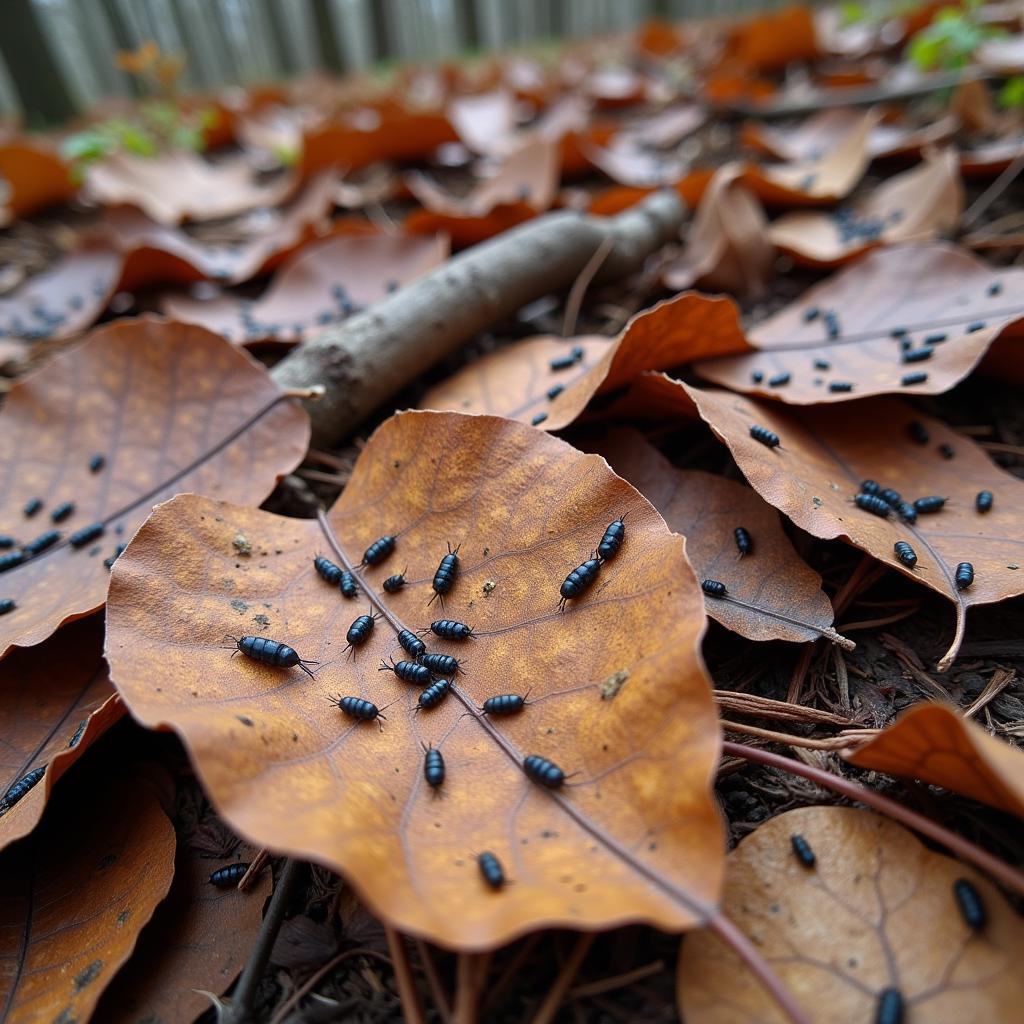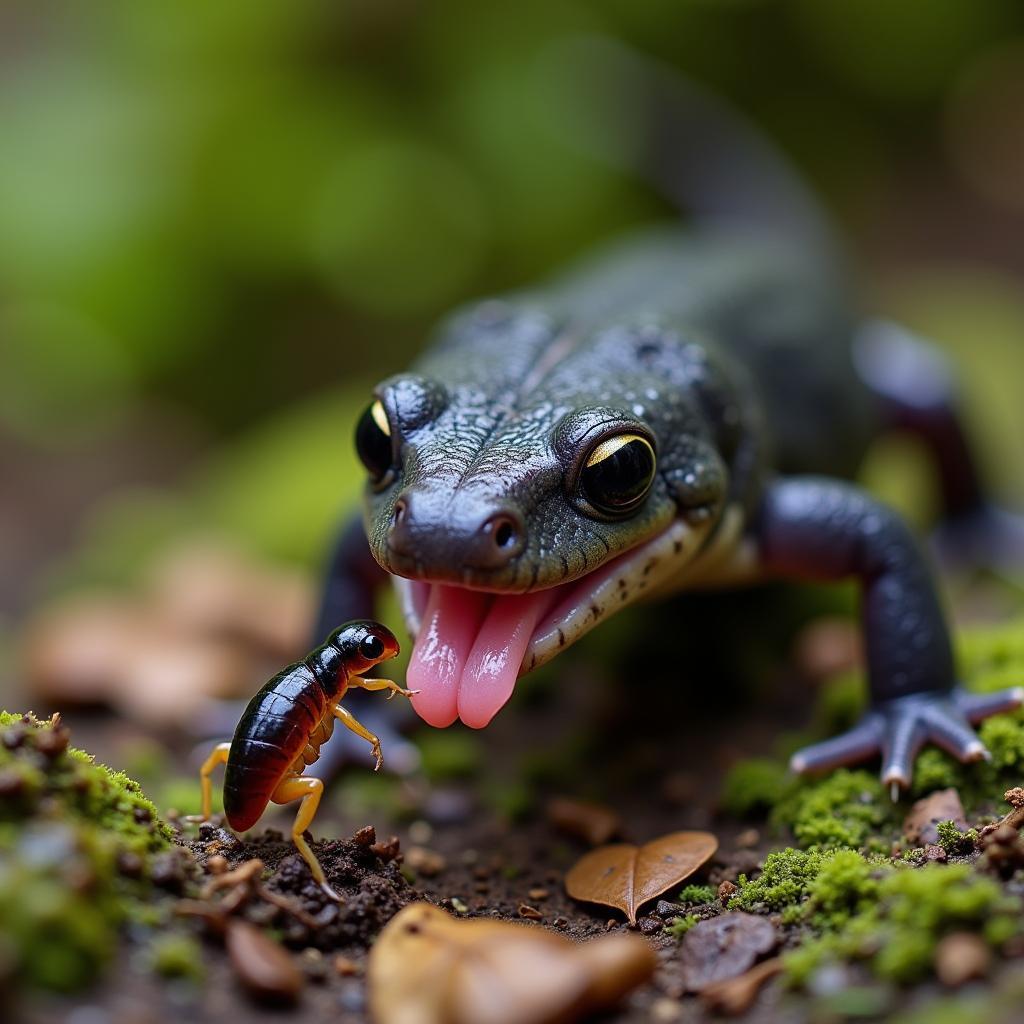Springtail Food might not be on your everyday menu, but these tiny creatures play a vital role in the ecosystem, particularly as a food source. They are essential decomposers, breaking down organic matter and contributing to healthy soil. But what eats springtails, and what do they themselves consume? Let’s delve into the fascinating world of collembola cuisine.
The Springtail Diet: What Do These Tiny Creatures Eat?
Springtails, also known as collembola, are minuscule arthropods found in soil, leaf litter, and other moist environments. Their diet primarily consists of decaying plant matter, fungi, bacteria, and algae. They are nature’s recyclers, transforming dead organic material into nutrients that enrich the soil. This makes them a crucial part of the food web, supporting a diverse range of larger organisms.
Fungi: A Springtail Favorite
Fungi are a staple in the springtail diet. These tiny arthropods are particularly fond of fungal hyphae, the thread-like structures that make up the main body of a fungus. They graze on these hyphae, releasing nutrients back into the soil. This symbiotic relationship between springtails and fungi is essential for maintaining a healthy and balanced ecosystem.
Bacteria and Algae: Supplemental Nutrients
While fungi are their primary food source, springtails also consume bacteria and algae. These provide additional nutrients and contribute to their overall health and survival. The diversity in their diet allows them to thrive in various environments, from forest floors to your own backyard.
Decaying Plant Matter: Nature’s Recyclers
Springtails are instrumental in breaking down decaying plant matter. They consume dead leaves, wood, and other organic debris, accelerating the decomposition process. This crucial role helps recycle nutrients back into the soil, supporting plant growth and maintaining a balanced ecosystem.
 Springtails on decaying leaf litter
Springtails on decaying leaf litter
Who Eats Springtails? The Predators of Collembola
While springtails are busy breaking down organic matter, they also serve as a crucial food source for various organisms. From tiny mites to larger amphibians, many creatures rely on springtails as a primary or supplemental food source.
Invertebrates: A Springtail Feast
Several invertebrates, such as mites, pseudoscorpions, and certain beetles, actively hunt springtails. These tiny predators rely on the abundance of springtails in their environments to survive.
Vertebrates: A Tasty Snack
Larger animals, including salamanders, frogs, and some small reptiles, also include springtails in their diet. While not their sole food source, springtails contribute to the overall nutritional intake of these vertebrates, particularly during their early life stages.
Birds: An Occasional Treat
Certain bird species also consume springtails, particularly those that forage on the ground or in leaf litter. While not a primary food source, springtails can supplement their diet, providing essential nutrients.
 Salamander consuming a springtail
Salamander consuming a springtail
Conclusion: Springtail Food and Its Importance
Springtail food, encompassing both what they eat and who eats them, plays a significant role in the intricate web of life. As decomposers, springtails are crucial for nutrient cycling and maintaining healthy soil. As a food source, they support a diverse range of organisms, from tiny invertebrates to larger vertebrates. Understanding the role of springtail food helps us appreciate the delicate balance of our ecosystem.
FAQ
- What is the main food source for springtails? Fungi are the primary food source for springtails.
- Are springtails harmful to humans? No, springtails are not harmful to humans.
- Where can I find springtails? Springtails are typically found in moist environments, such as soil, leaf litter, and under rocks.
- What animals eat springtails? Various animals, including mites, salamanders, frogs, and some birds, eat springtails.
- Why are springtails important to the ecosystem? Springtails are essential decomposers, contributing to nutrient cycling and soil health.
- Do springtails eat living plants? Generally, no. Springtails primarily feed on decaying plant matter and fungi.
- How big are springtails? Springtails are very small, typically ranging from 0.25 mm to 6 mm in length.
When you need assistance, please contact us at Phone Number: 02437655121, Email: [email protected] Or visit us at: 3PGH+8R9, ĐT70A, thôn Trung, Bắc Từ Liêm, Hà Nội, Việt Nam. We have a 24/7 customer service team.